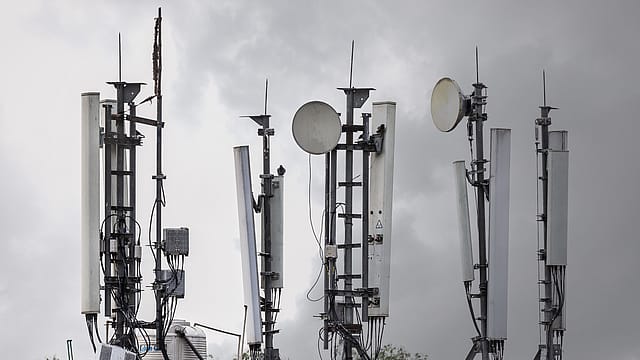Three contentious issues after TRAI's 5G price cut
ADVERTISEMENT

The Telecom Regulatory Authority of India (TRAI) has set the stage for the auction of radio spectrum for 5G services by slashing the base rate by 36-40% across bands. TRAI recommended a 40% cut in the price of spectrum in the 700MHz band and 36% in the 3300-3700MHz band.
Now an operator would need to pay ₹317 crore per MHz against the ₹492 crore in 2018 in the 3300-3700MHz band. Going by the 100MHz that an operator would need to provide services across India, that works out to a minimum outgo of ₹31,700 crore. In addition, TRAI has fixed ₹6.99 crore per MHz for the millimetre band—24.25-28.5GHz—which is being auctioned for the first time. Operators would need to spend ₹5,592 crore for 800MHz of millimetre band spectrum.
While that should provide a boost for the proposed 5G spectrum auction, things are not as simple as they seem. There are three issues that have emerged post the announcement by TRAI.
The first relates to the level of reduction in spectrum prices. In the responses to the TRAI consultation paper, mobile service providers had sought a 90-95% cut in spectrum prices, while the TRAI has reduced it by between 35-40% across different bands. Operators admit that rates are still quite high considering that they are still financially stressed. Going by initial reading, It seems unlikely that there will be any bidding again in the 700MHz band this time round too. In 2016 and 2021, the 700MHz band was put up for auction, but no operator bid for it.
The other issue relates to the duration of using the spectrum. In September 2021, the Department of Telecommunications (DoT) stated that in future auctions, spectrum will be given for 30 years. The prices that TRAI has suggested for spectrum relate to use for 20 years and not 30 years. TRAI has stated that operators will need to pay 1.5 times the auction discovered prices or the base price to retain the spectrum for 30 years. That means telecom operators would need to pay ₹55,938 crore to retain the spectrum in the two bands –millimetre and 3300-3700MHz—for 30 years.
December 2025
The annual Fortune 500 India list, the definitive compendium of corporate performance, is out. This year, the cumulative revenue of the Fortune 500 India companies has breached $2 trillion for the first time. Plus, find out which are the Best B-schools in India.
That is emerging as a contentious issue at a time when technology is changing by the day. In fact, the world has already started talking of 6G, while India is just starting the process to auction 5G spectrum.
The third and possibly the most contentious issue relates to the emergence of private networks. A private network is a local area network that uses cellular technologies to create a dedicated network with unified connectivity with a specific geographic area. A private network is defined as a network that is intended for non-public use—especially for large manufacturing complexes.
A landmark recommendation has been that non-telecom enterprises would be allocated 5G spectrum for building their private networks for data needs. However, TRAI has added that such enterprises can take spectrum on lease from telecom operators also. The telecom service providers have opposed the concept of private networks, since enterprise data revenue is expected to be the biggest chunk of operator revenues under 5G. That will take a hit if large enterprises set up private networks.
Private networks could also open up a new can of worms over what all can be considered to be included under adjusted gross revenues (AGR) in the future.
It is still early days. The DoT has to approve the TRAI recommendations or seek it to change. But, with this, the first step to formally launch 5G services in India has finally happened. Finally, it is the popularity of 5G use cases that will determine how popular 5G is. According to the Ericsson Mobility Report 2021, India is expected to have 330 million 5G subscriptions by 2026, accounting for 26% of mobile subscriptions.
